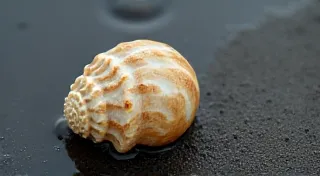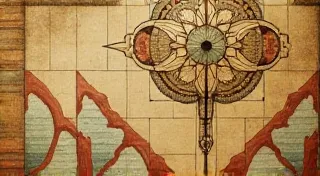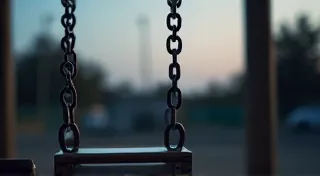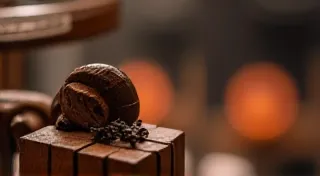The Inkstone's Reflection: Combining Typewriter Art with Traditional Writing Techniques
There’s a peculiar beauty in the echo of the past. Not the grand pronouncements of history books, but the quiet hum of everyday objects, those tools used and cherished by generations before us. For me, that echo resonates most clearly from antique typewriters. They aren’t just machines; they’re vessels of untold stories, whispers of creativity, and tangible links to a time when craft and deliberation held a different kind of value. And increasingly, I find myself drawn to exploring their potential not just as relics, but as partners in a modern creative dance—a dance that blends the stark geometry of typewriter art with the flowing grace of traditional writing techniques.
My journey with typewriters started, as many do, with fascination. I found a Remington No. 7 abandoned in a dusty corner of my grandfather’s garage. Its keys were seized, its ribbon long-faded, and a layer of grime clung to everything. I knew nothing about restoring antique typewriters at the time, but the machine’s inherent elegance – the cast iron frame, the intricate mechanism – captivated me. It felt more like rescuing a forgotten friend than fixing a broken appliance. That first Remington, even in its dilapidated state, sparked a lifelong passion. Years later, I still find myself drawn back to that feeling of rediscovering something precious.
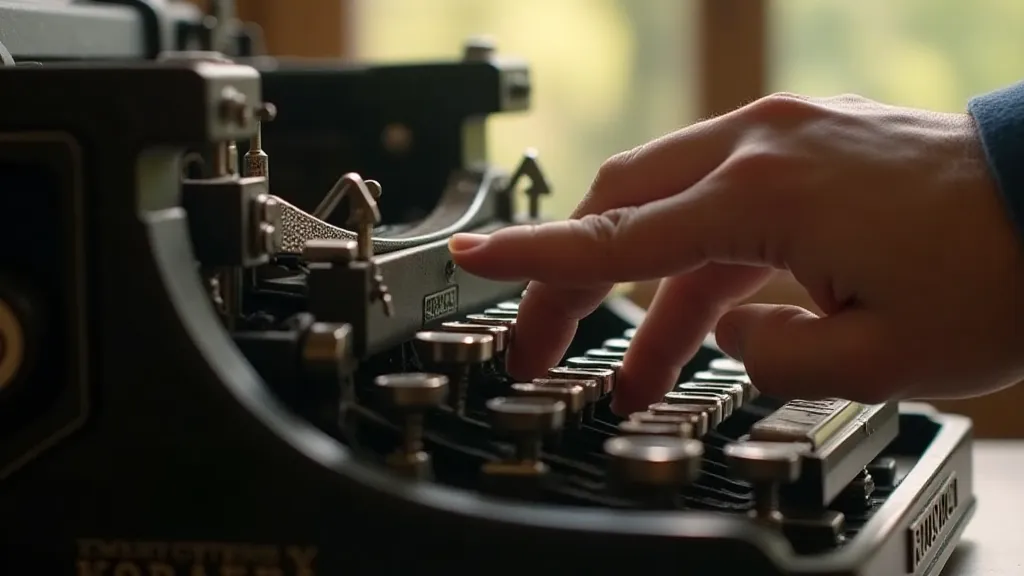
A Dialogue Between Steel and Ink
For a long time, my focus was purely on restoration. The intricate process – cleaning, lubricating, replacing parts, and painstakingly aligning the typebars – became a form of meditation. It's a testament to the remarkable ingenuity of early 20th-century engineering; a complex ballet of levers and springs designed to translate thought into tangible text. But as I brought more typewriters back to life, I began to see beyond their mechanical function. I noticed the unique character of the typefaces, the subtle variations in letter spacing, the almost imperceptible imperfections that gave each machine its individual personality. It became clear that these weren’t just tools for writing; they were instruments for creating art.
The intersection of typewriter art and calligraphy – or, more broadly, traditional writing – is a fascinating one. Calligraphy, in its purest form, is about more than just pretty lettering. It’s about rhythm, flow, and the deliberate shaping of each stroke. Similarly, typewriter art, while seemingly rigid and mechanical, can be imbued with a surprising degree of nuance. The choice of typeface, the deliberate arrangement of words, the careful placement of margins – all these elements contribute to the overall aesthetic.
Beyond the tangible beauty of the finished product, there’s a deeper psychological resonance that comes from engaging with these machines. Some believe that the mechanical nature of a manual typewriter—the clack of the keys, the tangible connection between thought and action—can unlock a unique creative flow. Perhaps, as some propose in articles like "The Page's Echo: Exploring the Psychological Impact of Using a Manual Machine", there's a subconscious link between the physicality of the process and the quality of the output.
The Craft of Restoration: A Bridge to Appreciation
Restoring antique typewriters isn’t just about bringing them back to working order; it’s about understanding the craftsmanship that went into their creation. It's about appreciating the skill of the typesetters who designed the fonts, the metalworkers who cast the typebars, and the assemblers who put it all together. Every nut, bolt, and spring tells a story of dedication and precision. The process itself fosters a deep respect for the objects and the history they represent.
For those new to the hobby, starting with a simpler model like an Underwood or a Smith Corona is recommended. These machines are generally more readily available and have a wealth of online resources dedicated to their restoration. More complex models, like the Hammond or the Blickensderfer, require a more advanced skillset and a willingness to tackle more challenging repairs. There’s a certain satisfaction that comes from bringing a forgotten machine back to life; a tangible reward for patience and perseverance. The sheer number of variables involved in preserving these devices often highlights the stories embedded within them—stories which sometimes reach far beyond the intended purpose of the machine itself. Understanding these nuances requires appreciating not only the physical aspects of the restoration, but also the historical context surrounding the device's creation and use. Often, you can find more detailed information about specific models in resources dedicated to tracing their lineage and influence.
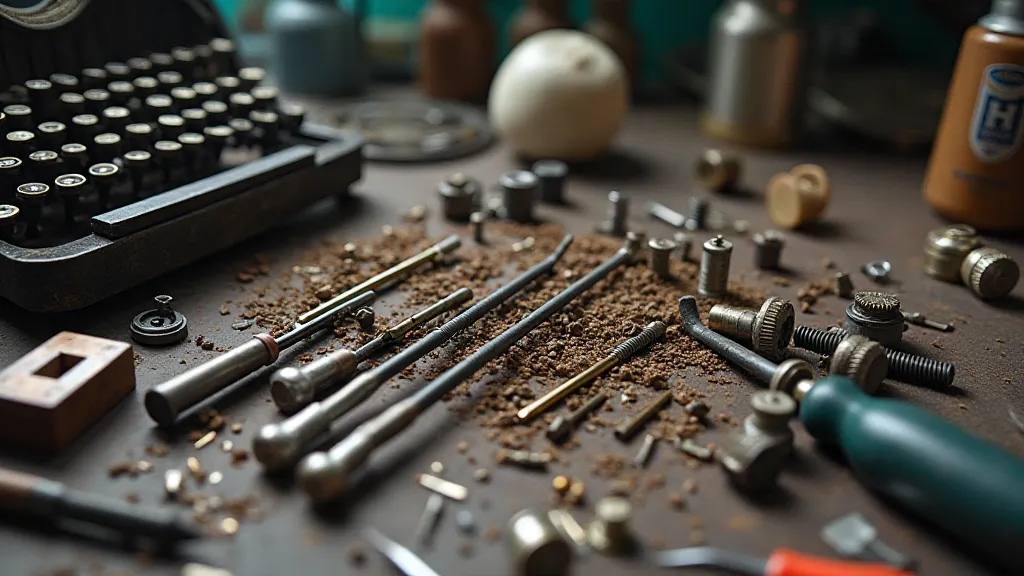
Beyond the Machine: Exploring Artistic Potential
Once a typewriter is restored, the real creative journey begins. Initially, I experimented with simply using the machines to type poems and short stories, appreciating the unique character each typeface lent to the words. Then, I started to explore the possibilities of combining typewriter text with hand-drawn illustrations, mimicking the visual rhythm of calligraphy. The starkness of the type becomes a counterpoint to the fluidity of the hand; the mechanical precision a foil to the organic imperfections of the human touch.
Consider the placement of the typed text – is it centered, justified, or deliberately offset? How does the font choice affect the overall mood and tone? These are just a few of the questions I ask myself when creating these hybrid works. The typewriter’s inherent limitations – its fixed width, its lack of true kerning control – can actually be a source of creative inspiration. They force you to think differently, to find new ways to express yourself within a defined framework. The digital age offers countless tools for manipulation and refinement, but there's a certain integrity, a raw honesty, in the limitations of the analog world.
The history of these machines is incredibly complex, with each model representing a unique chapter in the evolution of printing and communication. Trying to trace the lasting impact of a single model can be a profound experience, uncovering subtle influences on design, technology, and even culture. For those interested in diving deeper into these connections, "The Typographical Constellation: Mapping the Legacy of a Single Model" provides a fascinating exploration of these intertwining threads.
Collecting and Preservation: A Legacy for the Future
The world of antique typewriter collecting is a vibrant and supportive community. There are online forums, enthusiast groups, and even dedicated auctions where collectors buy, sell, and trade machines. Beyond the simple act of collecting, there’s a responsibility to preserve these artifacts – to ensure that future generations can appreciate their historical significance and artistic potential.
Proper storage and maintenance are crucial for preserving antique typewriters. Keep them away from extreme temperatures and humidity, and regularly clean and lubricate the moving parts. If you’re not comfortable performing these tasks yourself, consider seeking the help of a professional restorer. Every machine has a story to tell; it's our duty to ensure that those stories continue to resonate for years to come.
The idea that these machines hold more than just a mechanical function is compelling, and for some, the act of collecting becomes almost spiritual. There's a sense of connection to the past, a reverence for the craftsmanship, and an understanding of the ephemeral nature of time. For others, the thrill lies in uncovering the hidden narratives embedded within the machines themselves—the names of previous owners, the faint traces of forgotten correspondence, the subtle wear patterns that reveal years of use. These aspects are often linked to a deeper examination of the lives and experiences of those who once interacted with these machines.
Sometimes, the condition of a typewriter—damaged keys, faded ribbons, rust—can tell a poignant story of neglect and loss. Yet, even in their broken state, these machines retain a certain beauty, a testament to the resilience of the human spirit. The imperfections, the scars, the echoes of the past—these are the things that make each typewriter unique, that give it character, that make it a treasure.
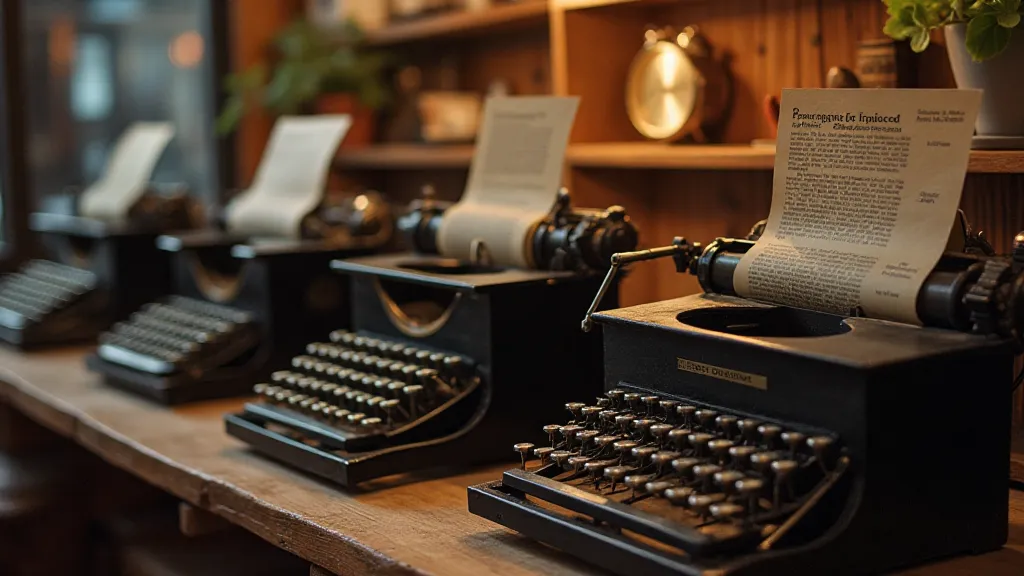
Beyond physical preservation, contributing to a shared understanding of these machines is also vitally important. Documenting their history, sharing restoration techniques, and celebrating their artistic potential all contribute to ensuring their legacy endures. Often, the stories held within a typewriter don't end with the machine itself; they continue through the hands of those who restore, collect, and appreciate them.
Even seemingly insignificant details – the type of ribbon used, the style of the case, the manufacturer's logo – can provide valuable clues about a typewriter's history and significance. The more we learn about these machines, the richer our understanding of the past becomes, and the more deeply we appreciate the ingenuity and artistry of those who created them.
Ultimately, the intersection of typewriter art and traditional writing techniques isn’t just about aesthetics; it's about connecting with the past, embracing the beauty of imperfection, and finding new ways to express ourselves in a rapidly changing world. It’s about listening to the echoes of the inkstone, and letting them inform our creative journey. It’s a fascinating realm where past meets present, where mechanics meet art, and where the stories of machines and the stories of people intertwine.
For those seeking further exploration into the impact these machines have had on the human experience, consider delving into resources dedicated to understanding the psychological effects of these devices. Sometimes, it's the subtle, almost imperceptible ways in which they shape our thoughts, emotions, and creative processes that truly resonate. As some propose in articles like "The Silent Chorus: Finding Stories Within Damaged Typewriter Mechanisms", even seemingly insignificant details can unlock profound insights.
